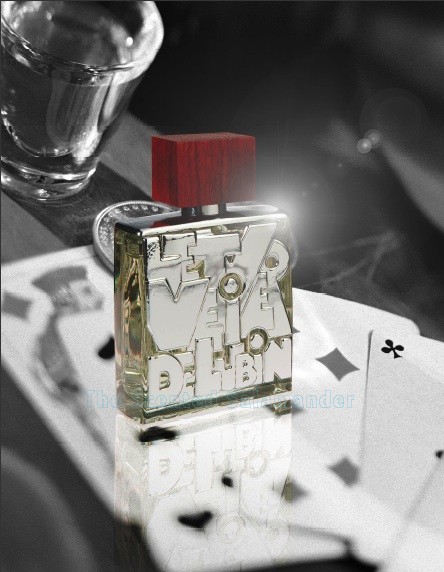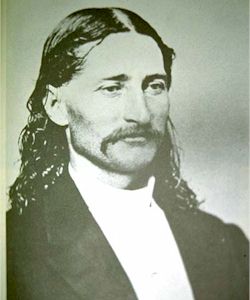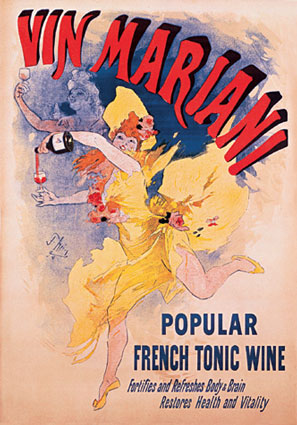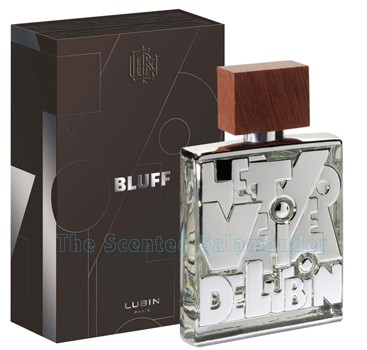Lubin Vétiver Bluff (2010): My 4th of July Review on the 5th of July: Of Coca-Cola, Sweat and Pioneers which all Contributed to Building the Nation {New Fragrance} {Perfume Review & Musings}

As a preamble, I just wanted to say that the review of Bluff is meant to be my 4th of July (weekend) review to commemorate Independence Day. Hope you had a great Independence Day celebration!  Vétiver Bluff by Lubin is part of the recent release of a quatuor of fragrances in a collection entitled Les Métalliques referring itself to the visual aspect of the flacons, two of which prolong the Eau-Neuve experiment while the two others prolong the Vetiver-de-Lubin one.
Vétiver Bluff by Lubin is part of the recent release of a quatuor of fragrances in a collection entitled Les Métalliques referring itself to the visual aspect of the flacons, two of which prolong the Eau-Neuve experiment while the two others prolong the Vetiver-de-Lubin one.
The part of the name which contains "Bluff" is a tribute to Far West legend, gunman and gambler Wild Bill Hickock, famed for his last hand at the time of his death when he got shot from the back in the head, still known as the "Dead Man's Hand" (2 black aces, 2 black eights and the jack of diamonds.)
On the olfactory plane, Bluff reconnects with a previous vetiver accord but adds the spin of a new-frontier kola nut based drink inspiration, an homage to early American versions of frontier tonic drinks, which are now almost universally known under the labels Pepsi-Cola and Coca-Cola.
Lubin stress the origins of the drink, mentioning "...the invigorating remedies supplied to the pioneers in the Wild West during the Gold Rush. Once developed by emigrant physicians, these tonics were first considered as medicines. They would soon become a part of American culture, and later be transformed into soft drinks for young people." 
Before cola drinks were made in America there was a well-known direct French ancestor called Vin Mariani short for "Vin Tonique Mariani à la coca du Pérou," a so-called "cola wine" which contained 6 to 7 mg of cocaine per bottle. An antique advert for the English-speaking market states "Vin Mariani, popular French tonic wine. Fortifies and refreshes body and brain. Restores health and vitality." It was also dubbed "King of Tonics, Tonic of Kings," as virtually all the royalty and intellectual elite of the time, such as Queen Victoria and Thomas Edison, were drinkers of Vin Mariani. Mariani, a Corsican chemist, was apparently also a marketing genius . He set up a huge and what looks like the first celebrity media campaign for his invention of a Bordeaux infused with coca leaves.
Bluff is signed by perfumer Thomas Fontaine, who also composed two other scents in Les Métalliques: Inédite and Figaro.
Gilles Thévenin, the president of Lubin Parfums, when asked why he had this interest in American history confessed that as a child he used to adore the legendary David Crockett. More recently, he became aware of the American heritage of the house of Lubin Est. 1798 by going through the archives of the house.
In September 2010, as part of the upcoming Haute Harrods event, the perfume house will lend to the London department store their earliest known export document dated from 1809, a "travel parchment" which belonged to Ernest August Saffers, the partner of founder Pierre François Lubin and the person in charge of all export operations...
Thévenin recounts also at one point how an American archaeologist sent him the picture of an antique flacon of Lubin perfume dating from the middle of the 19th century asking him for further precisions and help in identifying it. It turns out that the bottle had been found in the grave of an ex-saloon dancer in a dig located in a ghost town of the Gold Rush era (1848-1855). She had been buried with her Lubin fragrance by her side, a prized possession and no doubt, her signature scent. Thévenin noted that he finds the gesture "very moving,"
Looking up some sources, I found out that a French consular document dated 1885 states that both Lubin and Pinaud were the two most famous French perfume brands in the United-States at the time. Pinaud you can still find today, casually so, in drugstore-type stores. Lubin is reclaiming its American past in 2010 with Bluff but also Itasca, in high-end perfumeries.
The same document mentions the problem that both Lubin and Pinaud were so popular that it led to abundant counterfeiting of both brands. 13 years later, the issue was still relevant as in 1893, the Western Druggist felt the urge to warn potential customers of Lubin perfumes, describing their red and black shield in detail and saying "The genuine are labeled LUBIN Parfumeur, Distillateur, PAUL PROT & CIE., Proprietors, PARIS, 55 R. Sainte Anne, FRANCE."
About the style of the fragrances the house of Lubin develops today,Thévenin explains that they are not seeking to create avant-garde perfumes, "I am not trying to create a revolution, and at any rate this is not what Lubin is all about; but there is material substance, quality, volume and persistence, without the notes being too showy. So, it can be worn well and with pleasure, which is after all also the role of a perfume." He adds that "some people in my opinion these days are going for overkill where some "booster" musks are concerned, which improve neither the refined quality nor the subtlety of the compositions. There, I've said it!", he adds. For him, Bluff and Figaro of the four Métalliques nevertheless offer accords that are "original" but without being at the vanguard, a nuance he likes to stress.

Notes: lime, bergamot, nutmeg, cinnamon / clary sage, iris, kola nut / vetiver, cedar, patchouli, sandalwood, vanilla.
Vétiver Bluff opens on a recognizable accord of Coca-Cola - Thévenin likes to underline the fact that it is both "coca and orange-y, really current, but without the gourmand aspect one might fear," - soon followed by a spicy iris accord then followed next by a pungent and salty-musky leathery accord. I say "leathery" because as it turns out, there are no leather accords per se, although it feels that way to me. There is also a heavy accent, something like the scent of a heady vanilla coca-cola float mimicking an exhaling tuberose for sheer drama, which is ascribable to the alliaceous facet of clary sage (Salvia Sclarea L.) but sweetened by vanilla and amber. At one point, I pick out the clary sage more distinctively and realize that it creates this intense ambery-leathery impression. The perfume of flowering clary sage has been studied and its characteristic odor profile is reported to rest upon 1-methoxyhexane-3-thiol. Sclareol found in clary sage is used to make ambery derivatives in perfumery.
In the background, a soft vetiver note adds its shadow, staying a bit in retreat behind the more vivid accords in the front. The vetiver could signal the presence of a forest if we were to imagine the story behind the scent. As the scent mellows down - and just in case you started worrying that you might smell too authentically like an old pioneer of yesteryear in unwashed leather gear (clary sage offers also a typical sweaty, axillary nuance) - the vetiver accentuates its soft nuance by suggesting the slightly fruity scent of banana leaves. Then, the perfume takes on anew a more pungent nuance of leathery amber. In a movement which seems characteristic of the development of the composition, it then becomes sotto voce again, as if the perfume rode through up and down terrain, hills and vales.
I don't know what this putting-on-the-brakes means, but in the context of the exploration of the Far-West story, it suggests a sense of tribulations and the obsessive turn of the wheels of the wagons encountering easy and hard terrain in turn. Given the fact that the name of the fragrance is "bluff", one of its meanings which is the idea of an elevated terrain, the composition perhaps wants to suggest the idea of an uneven road, but also more generally the hazards of pioneer life.
The fragrance settles in the end into a quiet, linear yet pungent, sweaty leathery sensation, once again, softened and made more precious thanks to the pairing with the iris. It is only in the extreme drydown, when the motifs have been shed, that the coca-cola sensation resurfaces more clearly as the body and base of the scent.
Although presented as an unisex scent, a label to which it can pretend by balancing out a a soft, leafy vetiver with a more masculine ambiance of uncured leather, it ends up tilting the fragrance for me more in the direction of a men's fragrance. Of course, this is said from the comfortable standpoint of the moral certitude of one living in an urban setting in no need of brazen amazons.
I recall a friend's anecdote about her great grand-mother, a pioneer woman of old in the 19th century, who once had to pump a bear full of lead while holding her baby on the hip as she had stepped out from the cabin in the forest. I am well aware that this kind of woman might find Bluff just fine for her. Even fancy.
I can of course only imagine how this tough pioneer lady might perceive Vétiver Bluff to be. She might find it comforting, familiar, creating an olfactory recall of her husband gone ahead on the trail. Or her mind might focus on and isolate more strongly the daintiness of the iris note, its cosmetic powdery suggestion which would become conspicuous in contrast with the wintergreen air of the forest and the woodsy notes of the log cabin and the dirt of the road. She could be touched by a suggestion of far away exoticism, the vetiver, which would at the same time remind her of the familiar sweet and soft note of horse fodder. Perhaps, she would be disappointed not to smell more flowers and roses in it, expecting these notes as the ultimate signature of a lady's perfume from Paris.
Again, the perfume smells soft now after having suggested leather horse trappings and whatever leather and fur bags might be found in a wagon. It is as if the iris added its satiny, well-groomed human skin note next to the animal one.
Bluff offers a desirable story and ultimately a desirable skin note to create a balmy, soft leather and ambergris-like fragrance. The coca-cola note does not feel obvious and gourmand.The historical reference to early prototypes of cola drinks can be felt best in the top notes, as an overture, but remains very discreet afterward, as a coca-cola-ambery note mingling with a very understated sweet, fizzy cinnamon note.
If you want to try a more nearly-edible and characteristic coca-cola-smelling composition you can try Acqua di Parma Mandorlo di Sicilia which unexpectedly starts off smelling like Dr. Pepper and then like Coke.
Construction-wise, it seems that the composition of Vétiver Bluff attempts a narrative structure, but more in a suggestive rhythmic sense for me than by using a series of varied notes and atmospheres. In fact the palette of notes is quite economical. If it were not for this ups-and-down movement, these shifts in intensity, Bluff would be more clearly linear. It is more of a skin scent than a sillage one. It definitely begs to be worn rather than contemplated and scrutinized in all of its details. The bottle is a sight to behold though, with its clean, mirror-like silver lettering and wooden cap.
If the perfume showcases any note in particular, for me, it would be clary sage, rather than kola nut, in all of its interesting facets including this sweaty animalic one which makes me think of the perfume as a Cuir de Russie turned Cuir du Far West or a Cuir-de-Russie version made for gritty pioneers, scent of fear included thanks to a sulfurous Thiol compound.









